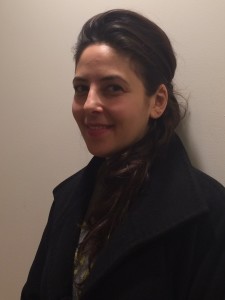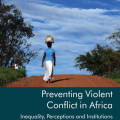
By Dorit Avganim
The views and opinions presented in this piece are that of the author’s and not necessarily The New School.
It’s rush hour on the subway and the way a man is eyeing me has my stomach in knots. He doesn’t look ‘like me’, meaning his NYC tapestry segment (laptop and latte? trendsetter? metro renter?) is unclear – and I’m notably uncomfortable. I try to ignore him, but three stops in and I swear his mind’s eye is turning my figure into a pork chop like in an old-school cartoon about folks stuck and starving on a desert island. I feel fear – heart rate up, sweaty palms – everything leading me to believe I’m in danger. I push these thoughts to the back of my mind. After all, I’m at best making an educated guess that this man means me harm. How much of what I’m feeling is true, and how much is just anxiety based on prejudice?
Modern psychology is using mindfulness to reverse cognitive distortions that lead to unnecessary bouts of anxiety, fear and depression. Could similar teachings help reduce prejudice actions of police against people of color? With young black males 21 times more likely to be killed by police than whites, it stands to argue that training police away from prejudice distortions could shift this and other staggering statistics. The mind does not distinguish between false fears (monsters in the closet), and real ones (beasts in the woods); the physiological response is the same. These confusions, or distortions, keep us safe but also feed into prejudice. The influence of prejudice on split-second decisions like those made daily by officers carrying sanctioned weapons is worth scrutinous review.
In Chris Mooney’s The Science of Why Cops Shoot Young Black Men for Mother Jones, he reflects that “physiological research into bias has focused on how people ‘essentialize’ certain categories, which boils down to assuming the nature that is tied to inherent and immutable qualities”. Inundated with images through entertainment and news media of what ‘danger’ looks like (namely, otherwise harmless young black men in hooded sweatshirts), how can we trust anyone’s guesswork, even our own, in accessing the rationality of fear?
Research shows that humans are tribal creatures with inherent bias against those perceived to be different. Thereby, ‘strength training’ against essentialized prejudice should be core in preparing our police force for duty. But it’s not. While psychology incorporates mindfulness to lead people away from irrational behavior, mindfulness is considered too ‘self-helpy’ to be suited to our men in blue. We allow the unfounded fears of a few to endanger the lives of young black men and us all.
I’m a few stops from my destination, and the man’s persistent staring has got me on edge. I stand near the doors as we pull into the next stop. The man mirrors me, standing at the door further down. He’s staring hard now and my body is poised like I’m about to run an Olympic race. We enter the next station, and the ‘ping-pong’ sound of the opening doors is like a starter pistol – but I don’t move. The traffic of people blasts past me while I remain planted on the train. The doors close in front of me, and I see the man standing on the platform now safely out of reach. The train moves on, I’m safe. I had confronted my cognitive process and in this case my fear was right, I guess. But while this guesswork may have worked in my favor this time, shouldn’t we rely on more than guesswork when the solution isn’t a change in transportation, but the pulling of an armed weapon? Just asking.
Dorit is a student in Public Policy in Action: Advancing Social Equity in America. In conjunction with the class, Milano is holding the 2015 Henry Cohen Lecture Series, Public Policy in Action, devoted to advancing social equity in America. The series examines how public policy serves as a vehicle to advance economic and social inclusion in the context of evolving demographic, economic, and political shifts in America. This series serves as a catalyst for the continuing dialog on the state of social justice in America.




